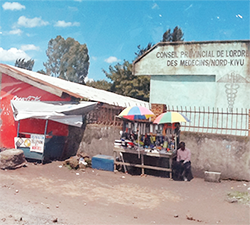
Lead Consultant: Silvia Hidalgo
The Value Added of the Central Emergency Response Fund (CERF) in DRC
Dahlia’s Review focuses on whether the operations of the United Nations Central Emergency Response Fund in the Democratic Republic of Congo added value to the broader humanitarian endeavour in the country.
The UN’s Central Emergency Response Fund (CERF), conceived to enable more timely and reliable needs-based humanitarian assistance, has provided funding in DRC since 2006.
In the same year, three other humanitarian reform initiatives related to CERF were rolled out in the country: the “Pooled Fund” (a Common Humanitarian Fund in the form of a multi-donor pooled fund); the cluster approach; and the first country-level Good Humanitarian Donor initiative.
These initiatives have been employed against the backdrop of the volatile and ever-changing humanitarian landscape in the Democratic Republic of Congo, a country affected by a range of complex – even chronic – crises linked to conflict and structural instability, creating a context in which humanitarian response must be constantly adapted.



